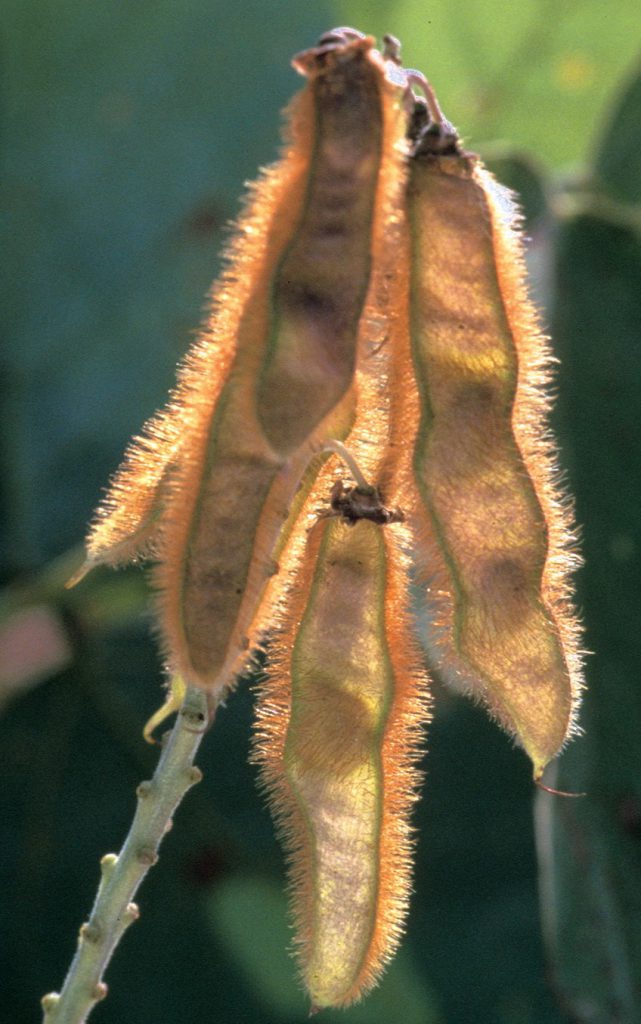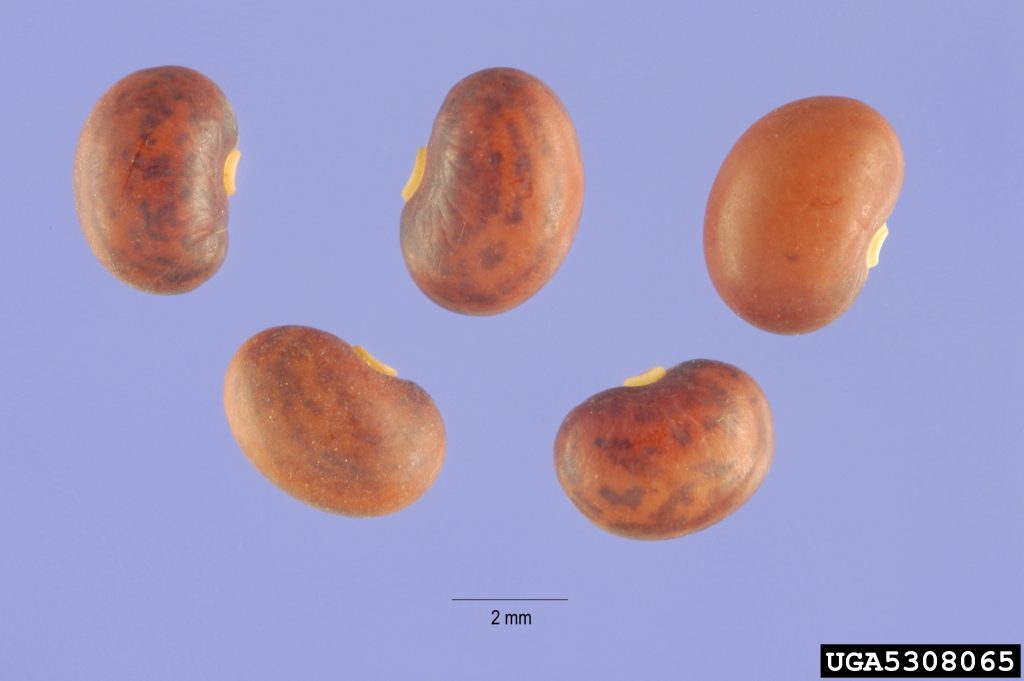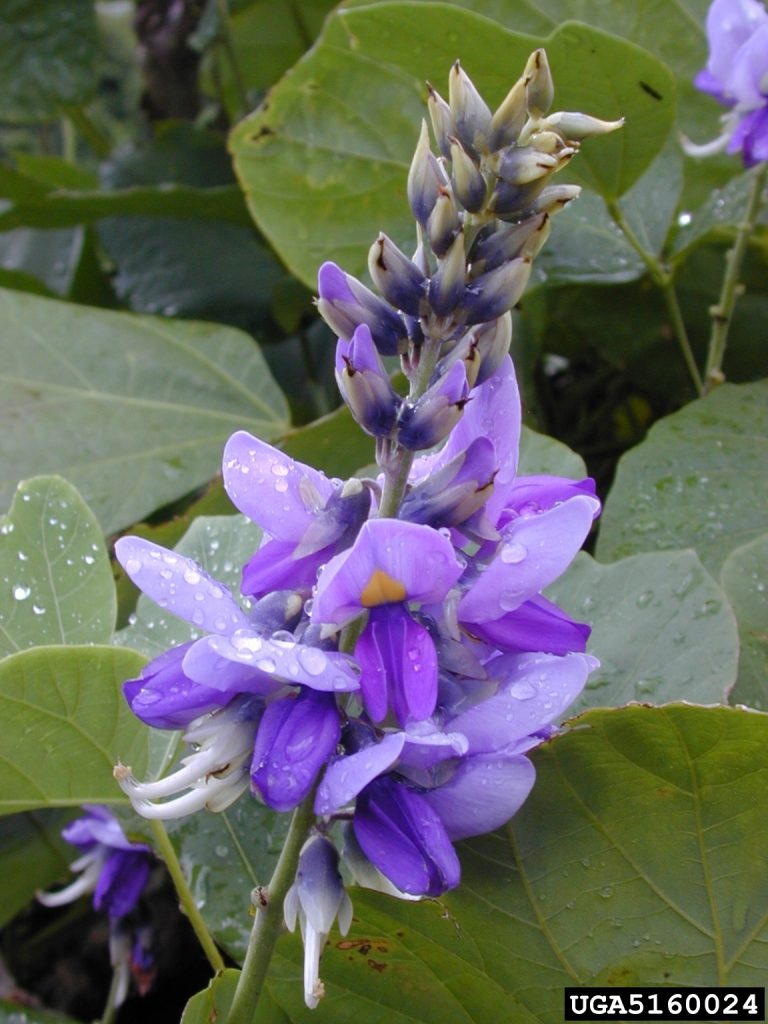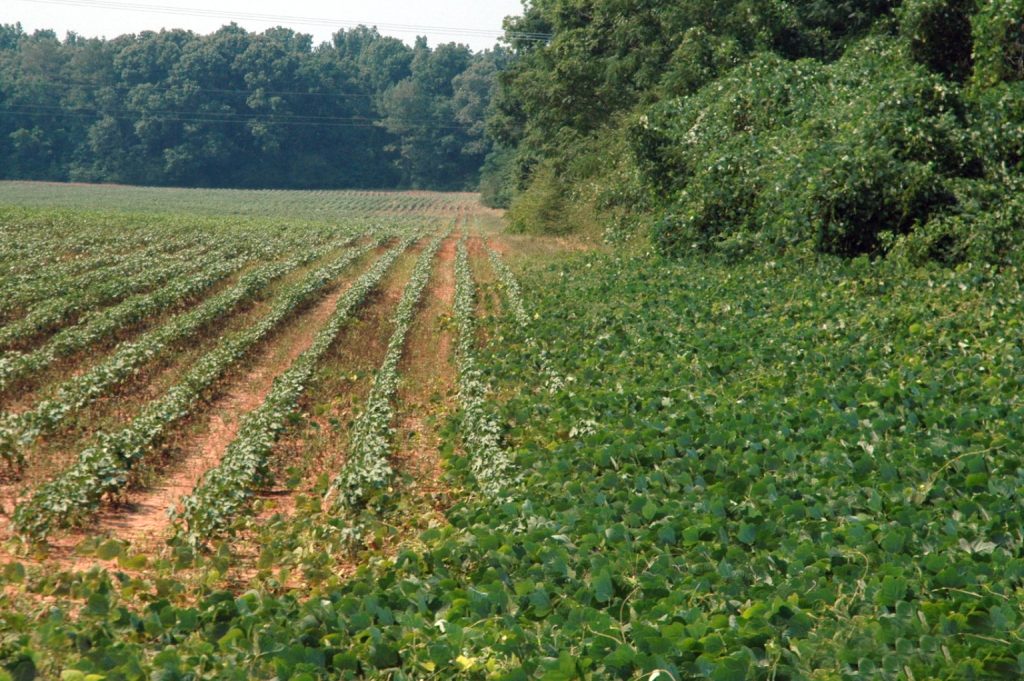Scientific name: Pueraria montana var. lobata
What Is It?
Kudzu (Pueraria montana var. lobata) is native to Asia and became popular in the southern United States as a porch plant. It now is known commonly as “the vine that ate the south.” Kudzu grows back every year and is a long, trailing vine. It can grow one foot a day and each vine can reach ninety-eight feet long. A single root crown may produce as many as thirty vines, which quickly expand out in all directions.
Is It Here Yet?
Kudzu was discovered in Clark County, but was treated and removed. There are no other known infestations, but it has been found in Oregon and poses a great risk to Washington.
Why Should I Care?
Kudzu is a very aggressive, invasive vine that is extremely difficult to control once established. Kudzu is so damaging that it covers and smothers all other plants in its path, eliminating native species. Kudzu may cover trees and kill them by blocking light for photosynthesis. The vine’s heavy weight also can damage or break tree branches. Land infested with kudzu is unusable for agriculture. The weight of the vines can bring down power lines and collapse buildings.
How Can We Stop It?
The Washington State Noxious Weed Control Board has listed kudzu as a Class A noxious weed, which requires immediate removal. To prevent it from establishing, do not transport, buy, sell, trade, or distribute this plant.
What Are Its Characteristics?
- Dense stands of kudzu are characterized by thousands of single-colored plants covering everything in their range.
- Kudzu leaves alternate up the stem and are divided into 3 oval to nearly heart-shaped leaflets reaching 3 to 4 inches long.
- Leaves are dark green and may be entire or slightly lobed.
- Leaves and stems are hairy.
- Kudzu flowers are purple or purplish-red with flower clusters that reach up to 1 foot long.
- Each flower is pea-like, 1/2 to 3/4 inches long.
- The flowers are fragrant and described as grape-like.
Additional Photographs





